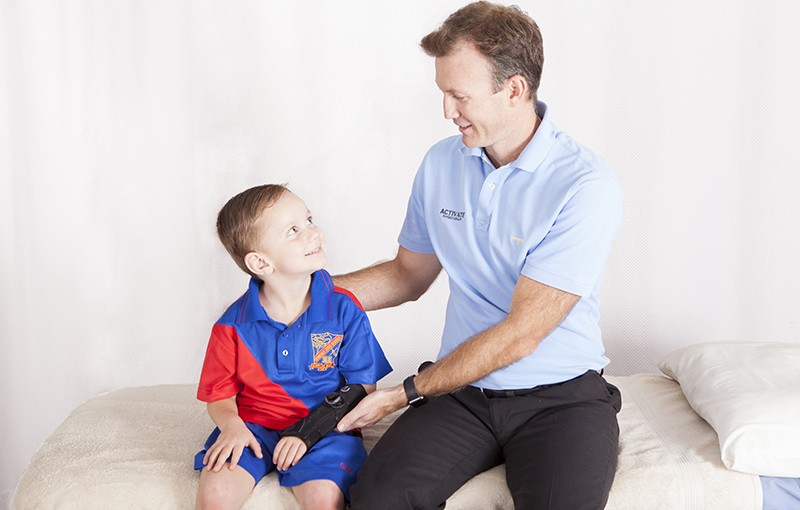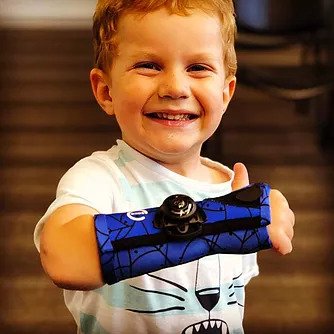Paediatric Distal Radius Fracture
What is a Distal Radius Fracture?
Distal radius fractures are very common in paediatrics (~25%). This article will deal only with paediatric distal radius fractures. For more information about distal radius fractures for adults click here.
The distal radius is predominantly injured through a fall onto an outstretched hand/wrist. When you fall onto your wrist there is a large axial load transferred to the end of the radius and therefore a greater chance of causing a distal radius fracture. We will exclude discussion on distal radial fractures that are intra-articular or involve the growth plate as these are more complicated. The most common paediatric distal radius fractures are Torus (buckle) fractures, greenstick and complete fractures.

Radial Buckle or Torus Fracture
A buckle fracture is a compression injury/failure of bone resulting in the cortex (outer section) bulging outwards (unilateral or bilateral). Although there is a disruption to the cortical bone, the integrity of the bone is minimally compromised. This means the a buckle type distal radius fracture is not too serious and heals well with splinting and conservative management. Immobilisation in a splint for around 3-4 weeks.
Greenstick Fracture
A greenstick fracture occurs in young bones when it has been bent to a degree that the outer section of the bone cracks causing a fracture on one side of the bone just like a green/young stick. The fracture is incomplete (does not extend from one side to the other) and has not broken into 2 pieces as does occur in adults or older bones. Greenstick distal radius fractures are not serious and heal well with splinting and conservative management. Immobilisation in a splint for up to 6 weeks.
Complete Distal Radius Fracture
A complete fracture is one that extends through both cortices. Most complete fractures involve both the radius and ulna. The radius is commonly a complete fracture. These fractures that have a transverse pattern have potential to displace and cause some angulation. There are acceptable degrees of angulation and they are up to 20degrees for a 0-5 year old, 15 degrees for 5-10 year old and 10degrees for 10-15 year olds. Complete fractures without displacement are often not serious and heal well with splinting and conservative management. Immobilisation in a splint for up to 6 weeks. For complete displaced distal radius fractures and fractures involving both the radius and ulna, the need for close follow-up should be emphasised due to the risk of loss of reduction or position.
Treatment for a Distal Radius Fracture
The key to getting a good result after a distal radius fracture (or any other fracture) and returning to full function is early management. Activate Physiotherapy offer same day appointments to attend their fracture clinic to ensure your distal radius fracture is managed with the best management from the start.
Following your Xray our Physiotherapists will fit you into a custom short arm fracture splint. Paediatric distal radius fractures have very good remodelling potential because of the proximity to the growth plate. There is a very low risk of growth arrest. Our approach is unique and our physiotherapists understand the importance of integrating your rehab during the healing process and will assist you with a rehabilitation program at the various stages of your healing journey. This reduces the complications that often occur from wrist fractures. It is vital that your attendance to all recommended follow up session is adhered to due to potential complications that need to be monitored. The main early complication of a paediatric distal radius fracture is a loss of reduction or optimal healing position. One in ten (10%) will lose position and will need a re-reduction.

How to Make a Fracture Clinic Appointment
Making an appointment at our fracture clinic is as easy as booking online for your nearest Brisbane based Activate Physiotherapy clinic in Stafford or Gumdale.
No Xray? No problem!
We can arrange bulk-billed xrays to confirm diagnosis and monitor healing.
Need your cast removed?
We can help with that too! We are able to remove backslabs and full plaster or polyester casts
